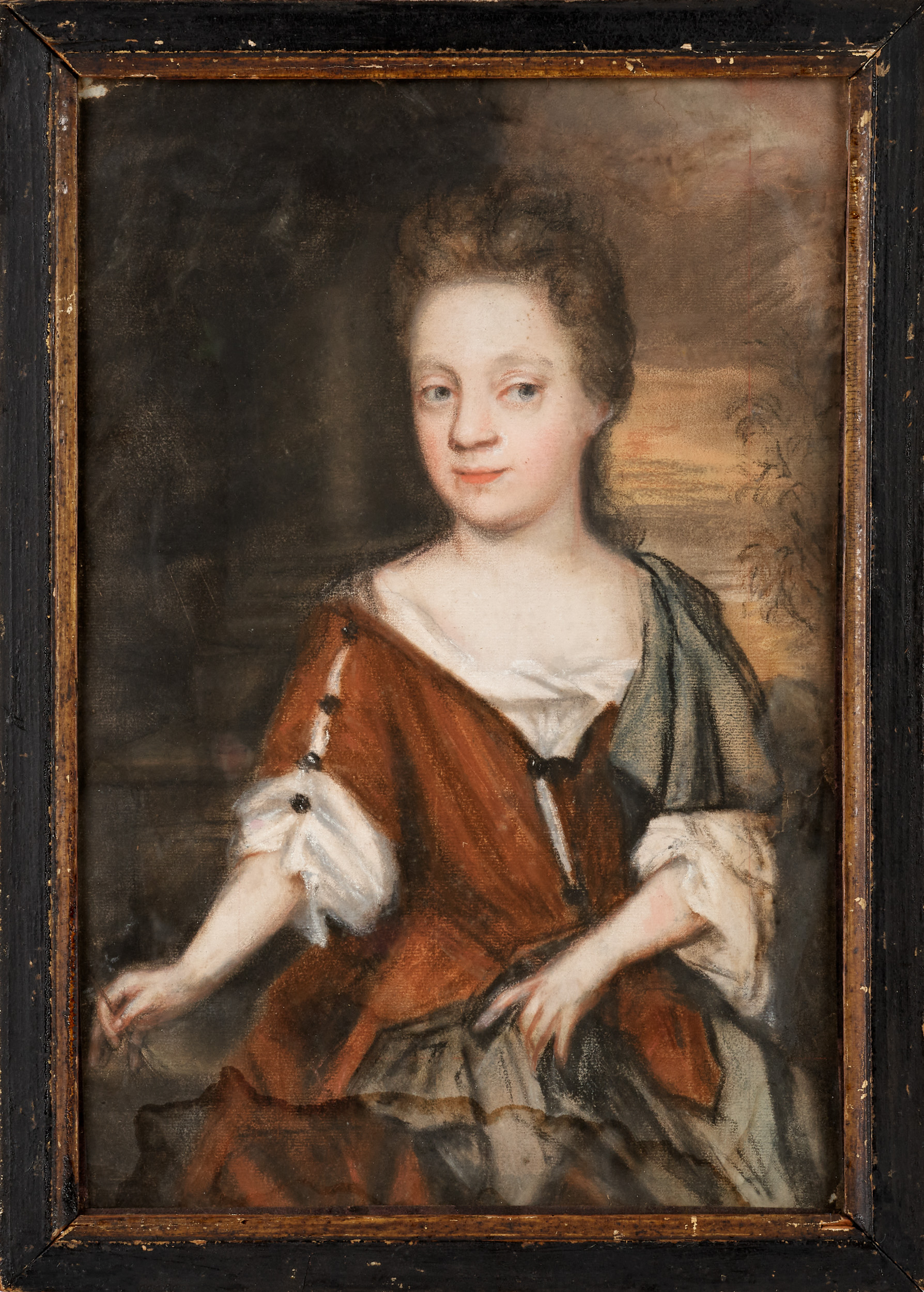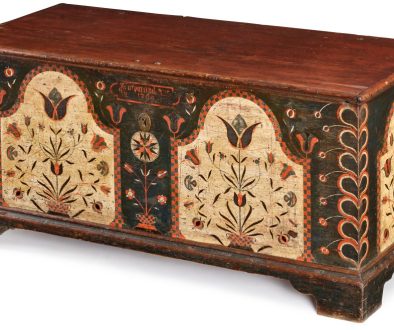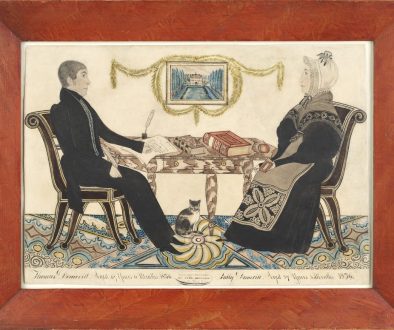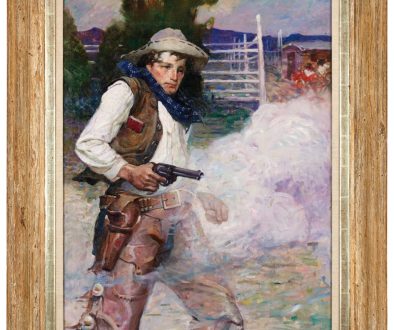Philotesia Owen
Philotesia Owen was born in Coulsdon, England, and in 1716 married Quaker merchant Robert Strettell (1693-1762). She is depicted in her portrait dressed in the typical attire of a young Quaker woman, unadorned, in modest brown silks, her shawl providing a touch of blue. Philotesia’s honeymoon was over in 1720, when Robert lost a great deal of money in the collapse of the South Sea Bubble. In 1736 they followed the lead of many fellow Quakers and emigrated to the religious freedom of Philadelphia. Arriving with a cargo of goods, Strettell opened a shop in Water Street facing Fishbourne’s Wharf, where he advertised for sale India velvet, muslin, flowered damask, blue and white China plates, Japanese tea kettles, Scotch snuff and “fine London tobacco.” Educated and prosperous, the Strettells bought a country house in Germantown to summer in. In later years Robert’s will also mentioned “proprietary rights in West Jersey” and a collection of Greek, Latin, and French authors. By the early 1740’s Strettell was a member of the Philadelphia City Council, the Governor’s Council, and served as Mayor of Philadelphia from 1751-1752. Robert’s public service career would have strained the patience and pacifism of Philotesia nearly as much as the collapse of the South Sea Company. Throughout the early 18th century, Philadelphia politics were so troublesome and the burdens of office so heavy that the mayors, appointed by the Council for one-year terms, had a history of absconding or refusing to serve. For nearly fifty years after Penn’s 1701 Charter granted government powers, mayors did not even receive compensation. Many selected candidates preferred to pay a fine rather than forgo a year of their lives. (Just four years before Strettell’s term, an annual salary of $100 was approved.) Strettell’s term coincided with a period of intense activity, largely due to the efforts of polymath Benjamin Franklin, who was completing work on the Post Office, the Hospital, and the College of Philadelphia all in 1752. Strettell was appointed one of the original 24 trustees of the College. Another Franklin endeavor, volunteer defense groups were being debated as the city discussed how to defend itself prior to the 1754 French and Indian War. Work on the Pennsylvania State House (begun in 1732) was completed in 1753. If there is a conversion ratio of Philadelphia mayor years to regular human years, it must be something like 4:1. Having prospered and performed their public service, the Strettells were both buried at Friend’s Ground in Philadelphia.
By Cynthia Beech Lawrence
Lot 133 Pastel portrait of Philotesia Owen (1697-1782)




